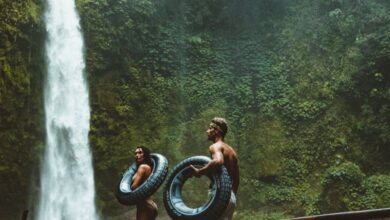How Do You Photograph Waterfalls for Stunning Results
Waterfalls are among nature’s most mesmerizing phenomena, drawing photographers with their dynamic beauty and the soothing sound of rushing water. Capturing a waterfall effectively requires technique, creativity, and a keen eye for detail. Whether you’re a beginner or an experienced photographer, the following tips will guide you in creating stunning waterfall images that evoke emotions and awe.
Choosing the Right Time of Day
Timing is crucial when photographing waterfalls. The golden hours—shortly after sunrise and before sunset—provide soft, diffused light that enhances the colors and textures of the scene. During these times, the warm light can add a magical quality to the water and surrounding foliage. Midday sun often leads to harsh shadows and overexposed highlights, so plan your visit accordingly. If you can’t shoot during the golden hours, consider utilizing overcast days, which offer even lighting and reduce glare on the water’s surface.
Selecting Your Equipment
While almost any camera can capture a waterfall, using a DSLR or mirrorless camera gives you greater control over settings. A sturdy tripod is also essential, as it stabilizes your camera for long exposure shots. This technique is vital for creating that dreamy, silky effect in flowing water. Neutral density (ND) filters can be beneficial, allowing you to slow down your shutter speed even in bright conditions. A wide-angle lens captures the grandeur of the scene, while a telephoto lens can isolate specific details, such as cascading water droplets or vibrant foliage.
Understanding Exposure Settings
To achieve the perfect shot, you need to master your camera’s exposure settings. A slow shutter speed is key for creating that smooth, ethereal look in the water. Experiment with shutter speeds ranging from 1/4 to several seconds, depending on the waterfall’s flow rate and the effect you wish to create. Use a low ISO setting, such as 100 or 200, to maintain image quality and minimize noise. Adjust your aperture based on depth of field; a smaller aperture (higher f-stop number) will keep both the waterfall and surrounding landscape in focus.
Framing and Composition Techniques
Composition can make or break a waterfall photograph. Use the rule of thirds to place the waterfall off-center, drawing the viewer’s eye. Leading lines, such as rocks or paths, can guide the viewer towards the waterfall, creating a sense of depth and engagement. Incorporate foreground elements like rocks, plants, or fallen leaves to add layers to your composition. Including the surrounding environment helps convey the waterfall’s scale and context, making for a more compelling image.
Experimenting with Angles and Perspectives
Don’t settle for the obvious viewpoint. Explore various angles to uncover unique perspectives. Get low to the ground to emphasize the waterfall’s height or climb up to an elevated position for a broader view. Each angle tells a different story; some may highlight the power of the water, while others may showcase the tranquility of the scene. Varying your position can also help you capture the waterfall in different lighting conditions throughout the day.
Post-Processing for the Final Touch
Once you’ve captured your waterfall images, post-processing allows you to enhance their beauty further. Adjusting contrast, brightness, and saturation can help bring out the colors and details of the water and surrounding landscape. Use software like Adobe Lightroom or Photoshop to fine-tune your images. Don’t overdo it; aim for a natural look that reflects the scene as you experienced it. A subtle touch can transform a good photograph into a stunning one.
Capturing the Essence of Waterfalls
Photographing waterfalls is not just about technical skill; it’s also about connecting with nature. Take time to appreciate the sounds, sights, and sensations around you. Each waterfall has its unique character, and your photographs should reflect this individuality. By combining the right techniques, equipment, and creative vision, you can create breathtaking images that convey the essence of these natural wonders. Embrace the journey, and let your passion for photography flow like the water you’re capturing.







